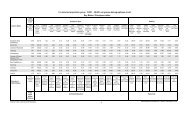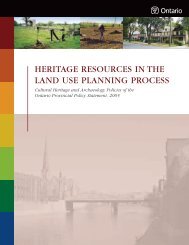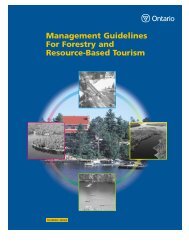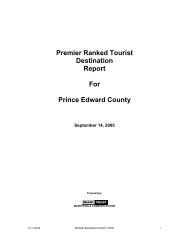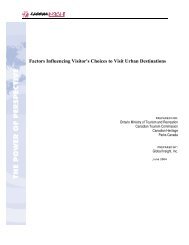Forest Operations on Crown Land - Ministry of Tourism
Forest Operations on Crown Land - Ministry of Tourism
Forest Operations on Crown Land - Ministry of Tourism
- No tags were found...
You also want an ePaper? Increase the reach of your titles
YUMPU automatically turns print PDFs into web optimized ePapers that Google loves.
3.2 Remote areasIf Stage 1 evaluati<strong>on</strong>s <strong>of</strong> archaeological potential are being made for areas that are remoteand difficult to access and a property inspecti<strong>on</strong> is not viable, it is acceptable to makerecommendati<strong>on</strong>s that remote areas are <strong>of</strong> low potential and will not require Stage 2assessment under the following c<strong>on</strong>diti<strong>on</strong>s:From the Standards and Guidelines for C<strong>on</strong>sultant Archaeologists (2011) (Secti<strong>on</strong> 1.3.4):Standards1. The degree <strong>of</strong> remoteness must be documented in sufficient detail to dem<strong>on</strong>strate that there arepractical obstacles to achieving access. This will be primarily a matter <strong>of</strong> distance and a lack <strong>of</strong>available transportati<strong>on</strong> infrastructure (i.e., roads, trails) al<strong>on</strong>g with factors <strong>of</strong> visibility (e.g., forestcover). Factors relating to seas<strong>on</strong>ality (e.g. snow cover, flooding) should not be a factor indem<strong>on</strong>strating difficulties <strong>of</strong> access.2. Aerial photos, detailed engineering plans or other detailed mapped informati<strong>on</strong> may be used todetermine that areas are <strong>of</strong> low potential. This informati<strong>on</strong> must be at a scale and <strong>of</strong> a sufficientlydetailed quality that allows for accurate evaluati<strong>on</strong> <strong>of</strong> the presence and character <strong>of</strong> features <strong>of</strong>potential. The characteristics and quality <strong>of</strong> the sources <strong>of</strong> informati<strong>on</strong> (e.g., scale, source, howrecently the informati<strong>on</strong> was acquired, general reliability) must be documented in sufficient detail todem<strong>on</strong>strate its ability to support accurate evaluati<strong>on</strong>s <strong>of</strong> potential.4 Stage 2: Property surveyWhile the Standards and Guidelines set out requirements for Stage 2 assessments forforest operati<strong>on</strong>s, there is a str<strong>on</strong>g element <strong>of</strong> pr<strong>of</strong>essi<strong>on</strong>al judgment <strong>on</strong> the part <strong>of</strong> thec<strong>on</strong>sultant archaeologist in implementing those requirements. During a Stage 2 propertysurvey, the c<strong>on</strong>sultant archaeologist verifies the accuracy <strong>of</strong> the archaeological potentialmap produced at the end <strong>of</strong> the <strong>Ministry</strong> <strong>of</strong> Natural Resources screening process and Stage1 assessment and carries out Stage 2 survey <strong>of</strong> those areas identified as havingarchaeological potential. Only areas identified as having archaeological potential requiresurvey.The archaeological potential map produced at the end <strong>of</strong> the screening process and Stage 1assessment may be further refined by the archaeologist up<strong>on</strong> viewing the property duringthe Stage 2 survey through field identificati<strong>on</strong> <strong>of</strong> additi<strong>on</strong>al areas with no archaeologicalpotential. Secti<strong>on</strong> 2.1 <strong>of</strong> the Standards and Guidelines sets out criteria that the c<strong>on</strong>sultantarchaeologist can follow to identify areas that do not require Stage 2 survey. Thesedeterminati<strong>on</strong>s can <strong>on</strong>ly be made by the c<strong>on</strong>sultant archaeologist <strong>on</strong> the ground and based<strong>on</strong> their experience, pr<strong>of</strong>essi<strong>on</strong>al judgment, and the geography <strong>of</strong> the area. Areas such asthose that are permanently wet, steeply sloped or bare rock are exempted from survey.Archaeological Assessments for <str<strong>on</strong>g>Forest</str<strong>on</strong>g> <str<strong>on</strong>g>Operati<strong>on</strong>s</str<strong>on</strong>g> <strong>on</strong> <strong>Crown</strong> <strong>Land</strong>s | 5


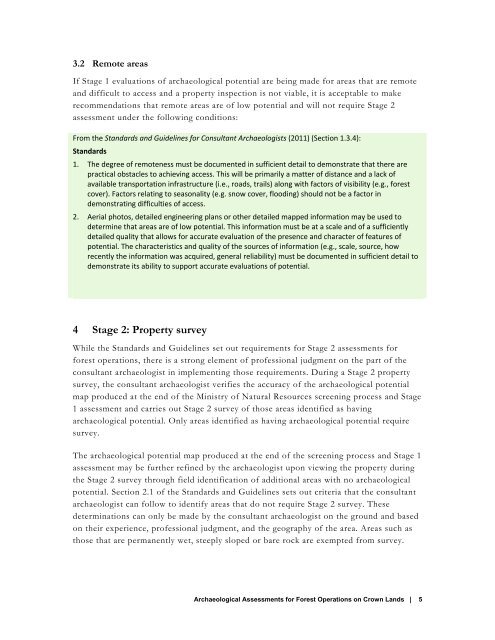
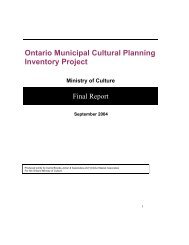
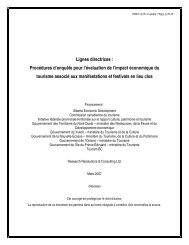
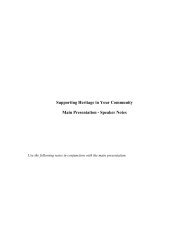
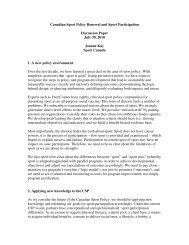
![THIS AGREEMENT made this [date], between [name of owner] (the ...](https://img.yumpu.com/49827605/1/158x260/this-agreement-made-this-date-between-name-of-owner-the-.jpg?quality=85)

